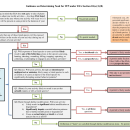Endangered Species and Recovery
One of the primary responsibilities of the U.S. Fish and Wildlife Service (Service) is to protect and recover imperiled species and the ecosystems upon which they depend. Congress defined “species” to include subspecies, varieties, and, for vertebrates, distinct population segments.
The Endangered Species Act (ESA) is America’s strongest conservation law. Originally passed by Congress in 1973, the ESA is jointly administered by the Service and the National Marine Fisheries Service (NMFS). The Service has primary responsibility for terrestrial and freshwater organisms, while the responsibilities of NMFS are mainly marine wildlife such as whales and anadromous fish like salmon.
All species of plants and animals, except pest insects, are eligible for listing as endangered or threatened. Learn more about how we work to conserve species in the Southeast region.
Download a List of Threatened and Endangered Species by Parish in Louisiana
SLOPES Agreements for ESA Review
Notice of Funding Opportunities
- Candidate Species Conservation Fund (CFDA 15.660)
- Endangered Species Recovery Implementation (CDFS 15.657)
Guidance on Determining Need for Incidental Take Permit Under ESA Section 10(a)(1)(B)
Are you unsure whether you need an incidental take permit? Download the questionnaire or decision tree to learn more.
Habitat Conservation Plan (HCP)
Habitat Conservation Plans (HCPs) under section 10(a)(1)(B) of the Endangered Species Act (ESA) provide for partnerships with non-federal parties to conserve the ecosystems upon which listed species depend, ultimately contributing to their recovery. HCPs are planning documents required as part of an application for an incidental take permit. They describe the anticipated effects of the proposed taking; how those impacts will be minimized, or mitigated; and how the HCP is to be funded. HCPs can apply to both listed and non-listed species, including those that are candidates or have been proposed for listing. Conserving species before they are in danger of extinction or are likely to become so can also provide early benefits and prevent the need for listing.
Incidental Take Permits
Private landowners, corporations, state or local governments, or other non-federal landowners who wish to conduct activities on their land that might incidentally harm (or “take” “take”
The term “take” means to harass, harm, pursue, hunt, shoot, wound, kill, trap, capture, or collect, or to attempt to engage in any such conduct.
Learn more about “take” ) a species listed as threatened or endangered must first obtain an incidental take permit from the Service.
Safe Harbor Agreements
A Safe Harbor Agreement (SHA) is a voluntary agreement involving private or other non-federal property owners whose actions contribute to the recovery of species listed as threatened or endangered under the ESA. The agreement is between cooperating property owners and the Service or the National Oceanic and Atmospheric Administration, which is responsible for most listed marine and anadromous fish species.








